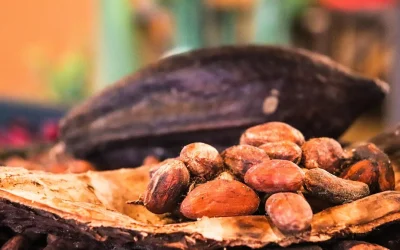The Tropical Fruits of Costa Rica:
A Colorful Guide
From farmer’s markets to smoothie bowls, tropical fruits are everywhere in Costa Rica — bursting with color, freshness, and a hint of jungle magic.
Beyond the taste, each fruit tells a deeper story: where it grows, how long it takes to mature and which region of the country it calls home.
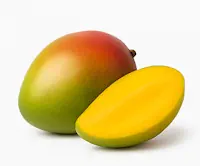
Mango
Flavor: Sweet, juicy, sometimes tangy
Grows on: A large leafy tree, Mangifera indica, up to 30m tall
Time to grow: 3–6 years from seed to fruit
Where to find it: Pacific Coast (Guanacaste, Puntarenas), Nicoya Peninsula
Mangoes are a Costa Rican favorite during the dry season, especially March to May. The fruit grows on tall trees with wide, glossy leaves and loves full sun. You’ll often see them dangling like golden ornaments in backyards or along country roads.
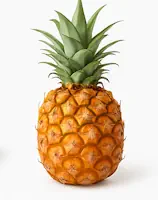
Pineapple
Flavor: Sweet, tropical, lightly acidic
Grows on: A low-growing bromeliad plant (Ananas comosus)
Time to grow: 18–24 months per fruit
Where to find it: Northern lowlands (San Carlos, Upala), Caribbean slope
Costa Rica is one of the world’s top pineapple exporters — and nothing beats tasting one fresh from the field. The pineapple grows from the center of a sharp-leafed rosette and needs warm, humid conditions to thrive.
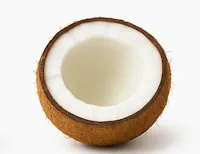
Coconut
Flavor: Nutty, fresh, and tropical
Grows on: The coconut palm (Cocos nucifera), a coastal tree up to 30m tall
Time to grow: 6–10 years to fruit regularly
Where to find it: All along the Pacific and Caribbean coasts
The tall, swaying coconut palms of Santa Teresa define the beach skyline. Coconuts are a tropical powerhouse: drink the water, scoop the meat, or cook with the cream. In local slang, young coconuts are called “pipas.”
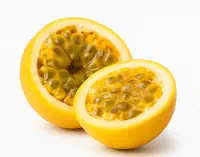
Passion Fruit
Flavor: Tangy, floral, sweet-tart
Grows on: A vigorous vining plant with beautiful purple flowers
Time to grow: 12–18 months
Where to find it: Highlands (Cartago, Turrialba), Pacific mid-elevations
This aromatic fruit is prized in Costa Rica for juice and desserts. The vine clings to fences and trellises and needs well-drained soil. The fruit forms round or oval, with a hard rind and jelly-like seeds.

Watermelon
Flavor: Sweet, refreshing, hydrating
Grows on: A sprawling ground vine (Citrullus lanatus)
Time to grow: 3–4 months
Where to find it: Guanacaste, Central Pacific, Orotina region
Watermelons love sun and sandy soil — and Costa Rica’s dry season is the perfect time for them. You’ll find massive sandías sliced and sold roadside from December through April.

Guava
Flavor: Sweet, slightly musky, floral
Grows on: A small fruit tree or shrub, evergreen and fast-growing
Time to grow: 2–4 years
Where to find it: Central Valley, highland zones, Orosi, Grecia
Guava trees are often found in rural yards. The fruit’s pink interior is soft and aromatic, often made into jams or eaten raw. The tree thrives in both humid and drier areas.
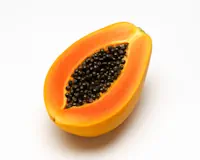
Papaya
Flavor: Soft, sweet, musky
Grows on: A fast-growing herbaceous tree, no woody trunk
Time to grow: 6–10 months
Where to find it: Widely available across Costa Rica, especially in hot lowland regions
Papayas are a breakfast staple across the country. Their tall, slender trunks with umbrella-like leaves hold clusters of ripening fruit year-round. Green papaya is used in salads; ripe papaya in smoothies or with lime.
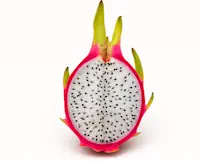
Dragon Fruit
Flavor: Mildly sweet, crunchy texture
Grows on: A climbing cactus vine (Hylocereus)
Time to grow: 1–2 years
Where to find it: Guanacaste, Nicoya Peninsula, drier Pacific regions
Pitaya is a showstopper — neon pink outside, white or red flesh inside with black seeds. It grows on climbing cactus arms that love heat and sun. Found seasonally in markets or grown locally by small farmers.
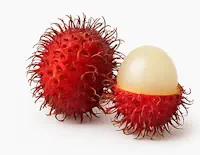
Rambutan
Flavor: Sweet, grape-like, tropical
Grows on: A tropical tree (Nephelium lappaceum)
Time to grow: 5–6 years
Where to find it: Pacific slope (Cobano, Puntarenas), Caribbean coast
This wild-looking red fruit with soft “hairs” is a farmer’s market favorite in Costa Rica. Inside is a translucent, juicy fruit around a seed. Best eaten fresh and chilled.

Starfruit
Flavor: Crisp, tart, juicy
Grows on: A small tropical tree with light foliage
Time to grow: 3–5 years
Where to find it: Caribbean lowlands, Central Valley, Nicoya
Known for its perfect star shape when sliced, this fruit is crisp and citrusy. It grows on slender trees that produce several harvests per year. Perfect for decorating plates or adding a tangy twist.

Mangosteen
Grows on: A slow-growing evergreen tree with dark green glossy leaves
Time to grow: 7–10 years to bear fruit
Where to find it: Southern Costa Rica and Caribbean lowlands, especially Osa Peninsula and Limón region
Mangosteen is known as the “queen of tropical fruits” — its deep purple rind hides snow-white segments that melt in your mouth. Delicately sweet and tangy, it’s a prized seasonal treat, eaten fresh with a spoon or chilled for a refreshing snack. The tree prefers humid, tropical climates and rich soil, making southern Costa Rica ideal for its growth.
hilled.

Guanábana (Soursop)
Grows on: A small, broadleaf tropical tree with low, spreading branches
Time to grow: 3–5 years from planting to fruit
Where to find it: Caribbean slope and humid lowland zones like Limón and the southern Pacific coast
Guanábana is one of Costa Rica’s most exotic fruits — large, green, and covered in soft spikes, with creamy white pulp inside. Its flavor is a tropical mix of pineapple, strawberry, and citrus. Often used in smoothies, juices, or frozen treats, guanábana is also praised for its health benefits and natural sweetness. It grows best in warm, humid regions with generous rainfall.
Tropical fruit in Costa Rica is more than food — it’s color, culture, climate, and community. Whether you’re sipping smoothies at The Bakery Santa Teresa or picking mangos on a walk, you’re tasting the land.
We invite you to explore these flavors with us — in every bowl, every pastry, every golden bite.
Explore
Chocolate, Cacao & Coffee – The Brown Gold of Costa Rica
[dipl_breadcrumb breadcrumb_layout="layout2" separator_type="icon_separator" separator_color="#937b2e" use_home_link_custom_text="on" home_link_text="The Bakery Santa Teresa" _builder_version="4.27.4" _module_preset="default" text_font="adore-3||||||||"...
Seasons in Santa Teresa
[dipl_breadcrumb breadcrumb_layout="layout2" separator_type="icon_separator" separator_color="#937b2e" use_home_link_custom_text="on" home_link_text="The Bakery Santa Teresa" _builder_version="4.27.4" _module_preset="default" text_font="adore-3||||||||"...
What to Do in Santa Teresa
[dipl_breadcrumb breadcrumb_layout="layout2" separator_type="icon_separator" separator_color="#937b2e" use_home_link_custom_text="on" home_link_text="The Bakery Santa Teresa" _builder_version="4.27.4" _module_preset="default" text_font="adore-3||||||||"...

